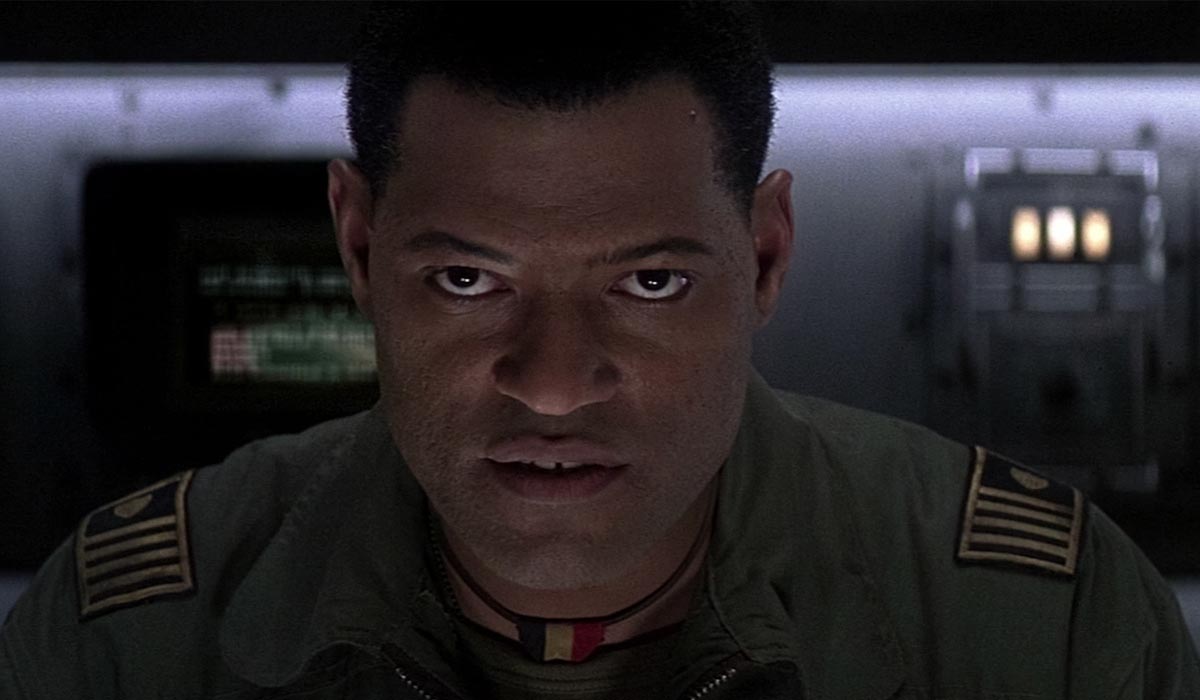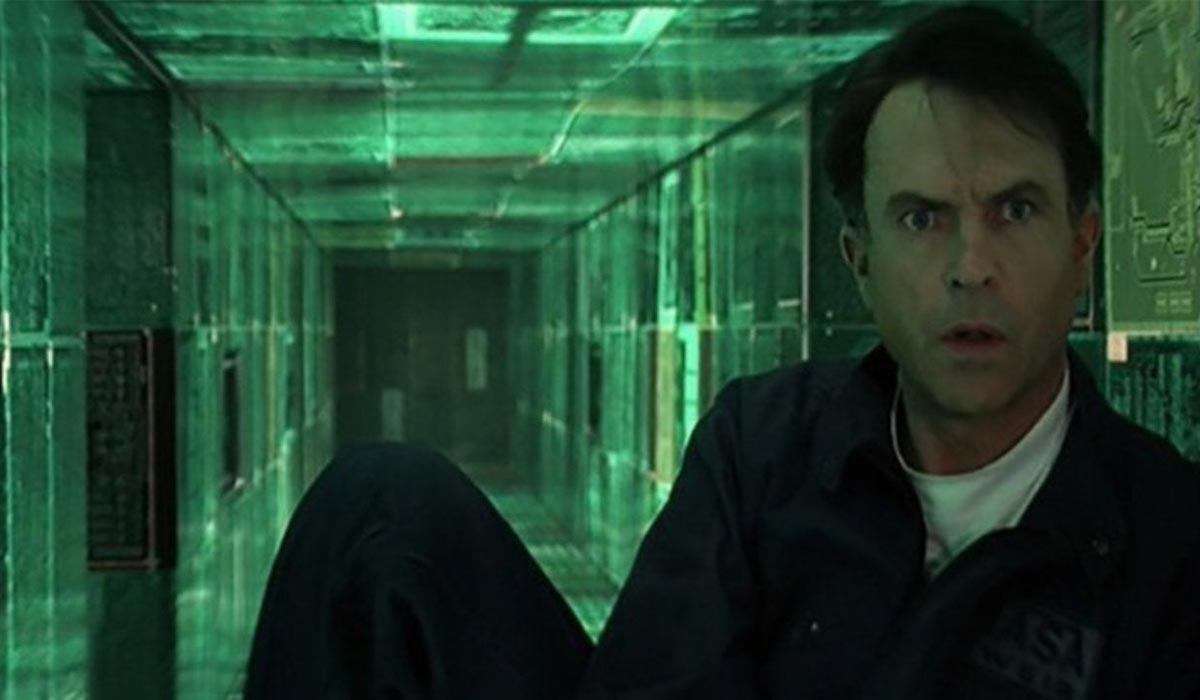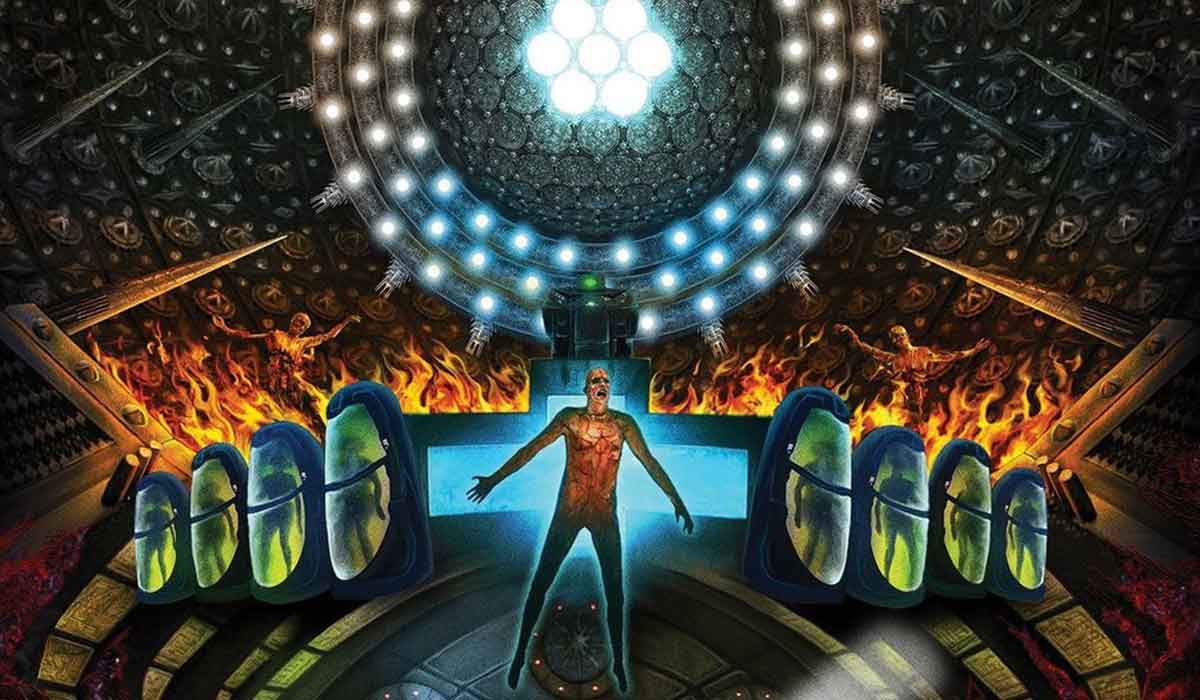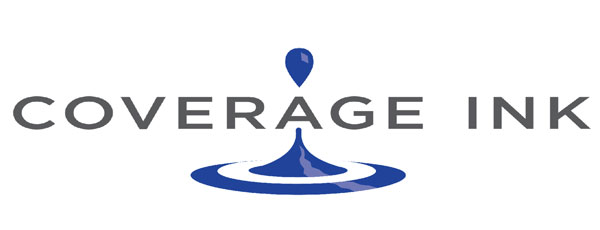EVENT HORIZON Doesn't Need The Extra Footage
For the past week (give or take three years), people online have been discussing the fabled “Snyder Cut”, aka the original version of Justice League (2017) that Zack Snyder had put together prior to leaving the project. The film we got in theaters was largely reworked by Joss Whedon, and satisfied almost no one, so fans of the comic characters, the actors who played them, and Snyder in general were curious: “What was it like before?” Snyder frequently mentioned his earlier version (with some variations on how “complete” it was), so “Release the Snyder Cut!” became a rallying cry on the internet.
And now, over three years later, his cut is easily available on the HBO Max service, with all of the VFX, sound, etc that wasn’t complete when he left (due to the tragic loss of his daughter, to whom the new version is dedicated to). For the most part, just about everyone agrees it’s much better than the theatrical version, but when it comes to “is it actually GOOD?” sort of queries, you’re bound to hear a variety of opinions. One frequent complaint is that the film is seemingly presenting just about every bit of footage Snyder shot, and while it’s better than the theatrical version it could even better had he trimmed it of some excess and came in with something more in the three hour range.
But thankfully we’re not here to talk about the Snyder Cut - I haven’t even watched it myself and have no opinion on the matter at this time. Instead I am here to talk about the term “assembly cut”, which is what some have used when referring to his version. Unfortunately, while it’s something that people who know about filmmaking are familiar with, casual fans may not, and are confusing it with “director’s cut” (and then getting into petty Twitter arguments). It’s something that I kept thinking of when watching Scream Factory’s new Blu-ray of Event Horizon, and how the fabled missing footage from it may actually be far less extensive than some (including myself) have believed in the past.
First, a little primer. Basically, an assembly cut is all of the footage put together in sequence; you might want to think of it as the block of marble or ice an artist would start with before making their sculpture. They will often run a length that seems absurd for a mainstream motion picture, and they should - a filmmaker is probably always going to shoot more than they’ll actually use, and (particularly on an ensemble film, where test audiences will dictate which characters get more time in the spotlight) they will also want options for reshaping the film as it comes together when editing. A “director’s cut”, on the other hand, is what the filmmaker would like to be released, and sometimes they’ll get their way, other times the studio will request/demand additional changes.

Is the “Snyder Cut” actually an assembly cut? Very likely not, but the sentiment that it FEELS like one at times is valid to those who have uttered it, and so the term comes up a lot and is read by people who might not understand what it is. No one (especially those making a mega-budget film like JL) would ever actually release an assembly cut for theaters, but unfortunately the endless amount of press for these movies results in the idea coming up more and more often. So a director might say something like “when we first put everything together it was five hours long,” but the finished film might be only two and a half, and in turn ignorant writers and readers alike will get it in their head that some nefarious exec or misguided director cut the film in half. Alas, that’s not how it works.
And that’s what brings us back to Event Horizon. Scream Factory’s blu-ray contains well over an hour of new interviews (including one with director Paul WS Anderson) and a gorgeous transfer, but many fans were disappointed that it would not include a longer version that has been drooled over from the second the film was released in 1997. Some of the deleted footage has appeared on the special edition releases over the years (including this one), taken from a VHS tape as the film elements have seemingly disappeared (this being a Paramount movie, any genre fan worth his salt should be familiar with their housekeeping methods in this department), but I am willing to bet that what we’ve seen is actually pretty much the majority of what’s “missing”.
“No, Anderson has said the first cut was two and a half hours, and the movie is only 95 minutes!” you’re probably saying right now. Yes, but again - he was talking about an assembly cut. That’s every bit of footage of Laurence Fishburne and the rest of the cast walking down corridors, every glance at a monitor showing their air levels, every establishing shot of the ship dwarfed by the endless space around it. In other words, it’s almost certainly a lot of stuff he’d end up cutting anyway, and you’d never know the difference. The reality is that they had a very rushed post production schedule and very little time to finesse the footage, so they basically had to substitute the test screening process for their own internal process.
A movie usually has a few months to be edited, over which time the director, the editor, the producers, even some cast will watch dozens of cuts of the film and fine tune it. Event Horizon never got that chance, really. This being the mid-90s, digital editing hadn’t yet taken over, so the film was being edited the “old” way, that is, with actual film being threaded through a flatbed editing setup. Nowadays you can easily make multiple cuts of a movie on your Avid/Final Cut/etc and have them all saved forever, but back then such things weren’t so easy. Taking something out and then deciding you wanted to put it back wasn’t as quick/simple as hitting an “undo” button.
But as it turns out, the movie we got was pretty close to what they wanted - this was not a “Snyder Cut” kind of situation by any means. Based on the director’s comments over the years, the footage that’s available, and the novelization (more on that soon), I believe that if they had more time, Anderson and his editor Martin Hunter probably would have ended up with a version that was, at most, fifteen minutes longer, and in reality probably closer to ten. No, that’s not an insignificant amount of footage, but it wouldn’t drastically change much, either, so if you dislike the movie I sincerely doubt your opinion would change. The only major missing sequence is one of the ones on the disc: Weir (Sam Neill) meeting with his superiors prior to joining up with Miller (Fishburne) and his crew. This is the only real bad call in my opinion; Neill’s introduction in the finished film is noticeably abrupt, denying us not only a bit more about why he was so obsessed with the ship but also a bit of what he was like prior to getting it in his head that it may have returned. It’s ironic since the film is frequently described as “Shining in space” and ended up suffering from the same issue people had with Jack Nicholson’s performance: without enough time spent with him “normal”, Neill just comes off as crazy the entire time.

Otherwise the losses don’t amount to much in the grand scheme of things,, and for what it’s worth, anyone who was interested in what was lost has been able to get it for as long as the movie’s been out, thanks to the aforementioned novelization. All of the excised stuff is present within it, as it was based on the shooting draft and published at the same time as the movie’s release, which means it was probably already being printed while they were still editing the film. Novelist Steven E. McDonald puts us in the heads of the characters from time to time (I particularly like how we get Weir’s inner eye-rolling whenever someone on Miller’s crew explains something science-y in terms that the audience would understand, as he’d be aghast at the simplification), but for the most part doesn’t invent anything on his own as some of his peers have in the past. Over its 218 pages, the only time it doesn’t feel like reading a glorified transcript of the film is when those cut bits appear, simultaneously proving he had the material and also that there wasn’t as much of it as some might hope.
I mean, outside of Weir’s intro, we’re mostly talking about lines of dialogue, mostly just a little bit of extra exposition or another theory as to what might be happening. Like when Justin (Jack Noseworthy) is in the airlock in some kind of trance, we get a little more about why the door can’t be opened and what alternate options they might have, and while it’s all well and good, it’s nothing that changes the scene. Even “Well I think it’s too rushed!” wouldn’t really work as a defense, as this is Paul *WS* Anderson we’re talking about - he’s not a guy that will let a scene play out to simmer to a boil (I would absolutely love to see Paul T. Anderson’s cut of the film). So, again, while there is technically another 50-55 minutes of footage we largely haven’t seen, had he been given all the time in the world to edit the film to his liking, he’d likely produce something pretty close to what we have, not the lumbering thing he quickly slapped together for an early test screening because they had to present SOMETHING and weren’t given the time to make those decisions themselves.
The only other thing to really miss is some gore footage, though again Anderson himself says he didn’t want all that he shot actually in there (an old trick of filmmakers is to present an excess amount of blood and grue to the censorship board, who will naturally tell them to cut it back - at which point they’ll just dial it back to what they actually wanted in the first place). It’s still a fairly gory film, especially from a major studio at that time (I think Demon Knight might be the only major studio genre film of the ‘90s to top it in that department), so those snippets, while I’m sure they’re great to look at, also wouldn’t drastically change things. If this was given the same treatment as a Friday the 13th sequel (Parts 7 and 8 are so censored there is barely any blood at all), that’d be one thing, but as it stands the film definitely earns its R rating.
So while it would be nice to see some of that stuff reinserted back in the film, I really hope we can stop this idea that the film is majorly compromised in some way, and it certainly shouldn’t be an excuse to skip this release in hopes of a better one. At this point we can safely assume that the footage is gone forever, and Scream Factory’s disc should be commended on what it has instead of shunned for what it doesn’t (I saw someone actually getting angry at them on their FB page, as if it’s somehow their fault Paramount didn’t store the elements properly). Anderson himself is pleased with the film as is (I personally believe it’s still his best), and on the commentary track he or producer Jeremy Bolt very rarely lament anything that was missing. If there were any other major sequences missing, they’d almost certainly be in the novelization, not to mention there would be some kind of noticeable jump or inconsistency in the film, which there is not (if anything, I’m still pleasantly surprised how long it takes for characters to start dying). Event Horizon is a really good film that possibly could be a little bit better, but let’s not forget that whenever a filmmaker does get that chance (such as Anderson’s idol, James Cameron), there are people who feel he ruined it with the extra material anyway.
Long story short? Maybe the best version of Event Horizon is the one you have always had.





